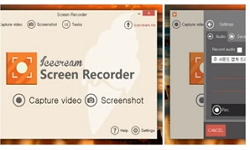This study has researched the characteristics and elements of Chwibyeong (翠屛), a sort of trellis in the Joseon Dynasty through the old documents, and the original form of Chwibyeong at Juhapru (宙合樓) in Changdeuk Palace. The results were as f...
http://chineseinput.net/에서 pinyin(병음)방식으로 중국어를 변환할 수 있습니다.
변환된 중국어를 복사하여 사용하시면 됩니다.
- 中文 을 입력하시려면 zhongwen을 입력하시고 space를누르시면됩니다.
- 北京 을 입력하시려면 beijing을 입력하시고 space를 누르시면 됩니다.

취병의 조성방법과 창덕궁 주합루 취병의 원형규명 = Studies on the Construction Method of Chwibyeong and Investigating Original Form of the Chwibyeong at the Juhapru in the Changdeok Palace
한글로보기https://www.riss.kr/link?id=A100956882
- 저자
- 발행기관
- 학술지명
- 권호사항
-
발행연도
2014
-
작성언어
Korean
-
주제어
전통조경 ; 조선 궁궐 ; 동궐도 ; 임원경제지 ; 병풍 ; Traditional Landscape Architecture ; Joseon Palace ; Donggwoldo ; Imwon-gyeongje-ji ; Screen
-
KDC
900
-
등재정보
KCI등재
-
자료형태
학술저널
-
수록면
86-113(28쪽)
- 제공처
- 소장기관
-
0
상세조회 -
0
다운로드
부가정보
다국어 초록 (Multilingual Abstract)
This study has researched the characteristics and elements of Chwibyeong (翠屛), a sort of trellis in the Joseon Dynasty through the old documents, and the original form of Chwibyeong at Juhapru (宙合樓) in Changdeuk Palace. The results were as follow. First, as the result of literatures analysis for Imwon-gyeongje-ji (林園經濟志) and Jeungbo-sallim-gyeongje (增補山林經濟), the plant screen was classified as kinds of support[frame] material, plants and methods of planting. It was found that the supports of Chwibyeong were made of bamboo or the material such as the Jinjangmok (眞長木: a stick of oak) and Giryu (杞柳: Salix purpurea var. japonica). The evergreen coniferous trees including Pinus densiflora, Taxus cuspidata and Thuja orientalis were mainly used for the plant material of Chwibyeong. The general planting method of Chwibyeong was to plant on the ground, but sometimes the container planting was also found on the artificial ground. Second, the term of ‘Chwibyeong’ in the literatures was used in only the screen made by evergreen trees, and the superordinate category term of it was indicated by ‘byeong (屛)’. Therefore Chwibyeong was a compound word formed from ‘chwi (翠)’ which means the characteristics of evergreen and ‘byeong’ as tree screen which the support was made by bamboo. And Chwibyeong had semantic context which was combined with the literary symbolization to describe a landscape of green peak and Taoist ideology be inherent from ‘twelve peaks of Musan[巫山十二峰]’ in Sichuan sheng (四川省). Thirdly, the photograph of Chwibyeong at Juhapru taken by the 1880s, showed that Chwibyeong was made with coniferous trees and was almost 2 meters high. The Chwibyeong at Juhapru was removed during the Japanese colonial era, but a few yew trees(Taxus cuspidata) used for Chwibyeong are still remaining. And some Juniperus chinensis which the composition time is unclear, were cultivated while hung loose its branchs at the sides of Eosumun (魚水門). This Junipers were presumed to be planted by Japanese after Japanese annexation of Korea(1910), and it was judged that both of the roofs of Eosumun's side gates might have been transformed into Japanese style at the same time. Lastly, Chwibyeong at Juhapru was restored in 2008 but it was restored in wrong way from original form without precise research. Especially Chwibyeong was restored with Sasa boreralis which is damaged by frost, so it requires exertion that should revive the originals to plant original material as much as possible. And it needs the development of fabrication technique for Chwibyeong and the application to current landscape architecture.
국문 초록 (Abstract)
국/문/초/록 본 연구는 고문헌 분석을 통해 조선시대 취병의 특성과 제요소를 분석하고 주합루 취병의 원형적 물상을 고찰한 것으로서 다음의 결과를 도출하였다. 첫째, 『임원경제지』, 『...
국/문/초/록 본 연구는 고문헌 분석을 통해 조선시대 취병의 특성과 제요소를 분석하고 주합루 취병의 원형적 물상을 고찰한 것으로서 다음의 결과를 도출하였다. 첫째, 『임원경제지』, 『증보산림경제』 등의 문헌분석결과 취병은 지지대의 종류, 식물소재, 식재형식에 따라 분류되었다. 지지대는 대나무, 진장목(眞長木), 기류(杞柳)에 따라 분류되며, 사용된 식물소재는 소나무, 주목, 측백나무 등의 상록침엽교목의 사용이 우세했다. 식재방법은 자연지반에 심는 것이 일반적으로 나타났으나, 분을 사용하여 인공지반에도 조성하였다. 둘째, 문헌에서 취병은 상록수를 사용한 식물 병풍에서만 사용된 용어였으며, 이의 상위범주어는 ‘병(屛)’으로 지시되었다. 즉 취병은 사계절 푸른 상록수의 특성을 일컫는 ‘취(翠)’와 대나무로 지지대를 만든 수벽 구조물인 ‘병’을 합성한 말이다. 또한 취병이라는 명칭에는 자연 산수를 묘사하는 문학적 상징성과 무산십이봉에 내재된 신선사상이 융화되어 있었다. 셋째, 1880년대에 촬영된 주합루 취병은 주목으로 보이는 침엽수로 이루어져 있었으며 높이가 거의 2m에 달했다. 일제강점기 때 취병은 철거되었으나 취병의 소재로 사용된 주목이 몇 주 존치되어 있었고, 식재 시기가 불분명한 향나무가 어수문 양 옆으로 줄기를 늘어뜨린 채로 가꿔지고 있었다. 이 향나무는 한일병합 후 일본인에 의해 이입된 것으로 추정되는데, 같은 시기에 어수문 좌우 협문이 변형되어 일본 건물의 합각모양을 한 지붕이 씌워졌던 것으로 판단된다. 넷째, 2008년 창덕궁 주합루 취병은 복구되었으나, 정밀한 고증의 부재로 원형적인 취병과는 거리가 멀었다. 특히 식재된 조릿대가 동해를 입어 상당 부분 고사됨으로써 취병이 제 기능을 못하고 있는 바 가능한 본래의 식물소재를 사용하여 원형을 살리는 노력이 필요하다. 또한 취병 제작기술의 개발, 현대 조경에 응용하는 것은 과제로 남아있다.
동일학술지(권/호) 다른 논문
-
- 국립문화재연구원
- 김태형
- 2014
- KCI등재
-
- 국립문화재연구원
- 김현주
- 2014
- KCI등재
-
- 국립문화재연구원
- 심영환
- 2014
- KCI등재
-
- 국립문화재연구원
- 장준구
- 2014
- KCI등재
분석정보
연관 공개강의(KOCW)
-

인터넷 서핑 중 전체 페이지를 원클릭으로 캡쳐할 수 있는 Full Page Screen Capture
신한대학교 신종우 -

Big Screen Science: Law of Averages
Teachers TV Teachers TV -

Big Screen Science: Stem Cell Controversy
Teachers TV Teachers TV -

Big Screen Science: The Perry Pigger Show
Teachers TV Teachers TV -

동영상 녹화 및 이미지 캡쳐 Icecream Screen Recorder 활용법
신한대학교 신종우





 RISS
RISS


